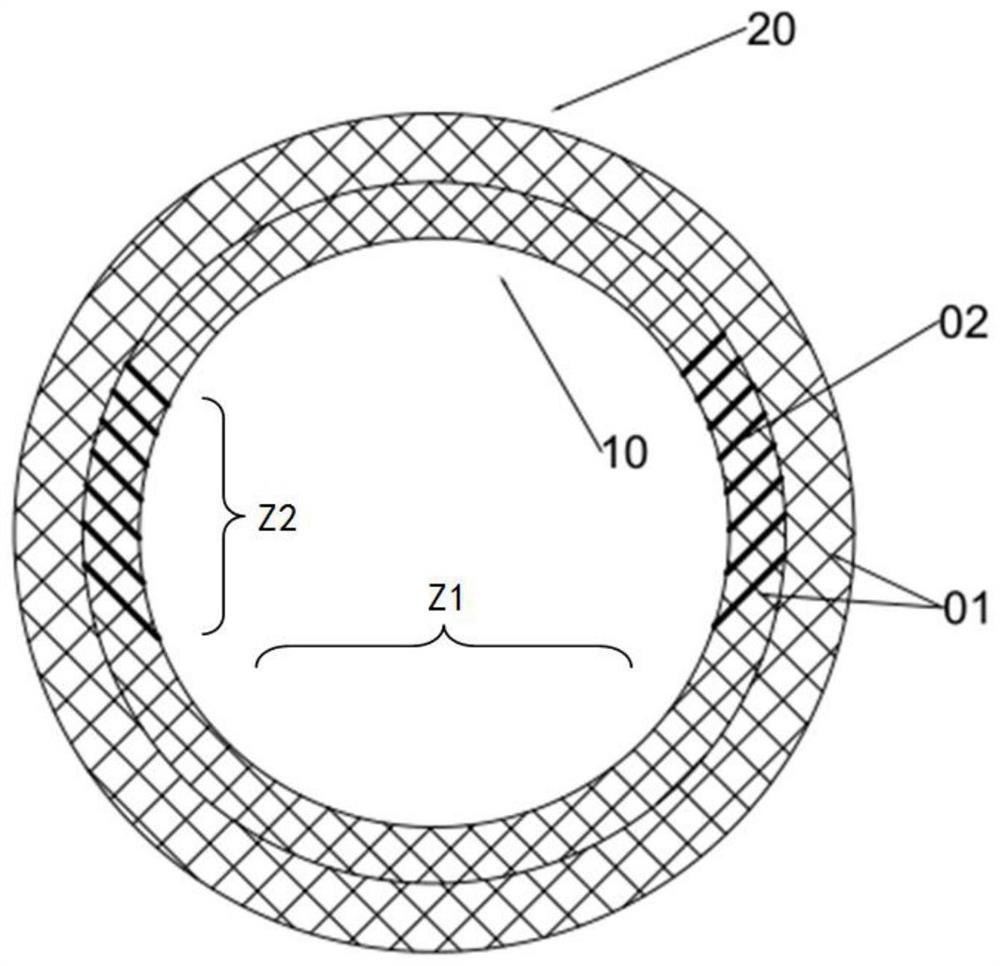Medical stent for digestive system and manufacturing method thereof
A digestive system and medical technology, applied in the direction of stents, can solve the problems of limited application, inability to test and verify with individual patients, and not being well used to optimize the overall performance of a more general digestive system medical stent, to achieve The effect of balancing strength and toughness, reducing the difficulty of implantation, and optimizing the support structure and support area
- Summary
- Abstract
- Description
- Claims
- Application Information
AI Technical Summary
Problems solved by technology
Method used
Image
Examples
Embodiment 1
[0032] see figure 1 , figure 1 It is a structural schematic diagram of the medical stent for the digestive system in Example 1 of the present invention. A medical stent for the digestive system is obtained by 3D printing using degradable polymer materials. The medical stent includes at least two continuous layers of three-dimensional grids in the radial direction structure, this embodiment only takes two layers as an example, wherein the outer three-dimensional grid structure 20 is printed from degradable polymer main material 01, and the inner three-dimensional grid structure 10 is made of degradable polymer main material 01 and at least A degradable polymer sub-material 02 is compositely printed. This embodiment only takes a degradable polymer sub-material 02 as an example. The degradable polymer sub-material 02 is fully degraded earlier than the degradable high The molecular main material 01 is completely degraded, and, in the inner three-dimensional mesh structure 10, at ...
Embodiment 2
[0045] see figure 2 , figure 2 It is the structural schematic diagram of the medical stent for the digestive system in Example 2 of the present invention. It is the same as in Example 1. The medical stent for the digestive system in this embodiment is obtained by 3D printing of degradable polymer materials, and includes two continuous layers of three-dimensional in the radial direction. Grid structure, the outer three-dimensional grid structure 20 is printed by degradable polymer main material 01, and the inner three-dimensional grid structure 10 is printed by composite printing of degradable polymer main material 01 and degradable polymer auxiliary material 02 , the total degradation of the degradable polymer secondary material 02 is earlier than the total degradation of the degradable polymer main material 01, and in the inner three-dimensional grid structure 10, the degradable polymer main material 01 is in the axis of the entire medical stent There is a continuous porti...
PUM
 Login to View More
Login to View More Abstract
Description
Claims
Application Information
 Login to View More
Login to View More - R&D
- Intellectual Property
- Life Sciences
- Materials
- Tech Scout
- Unparalleled Data Quality
- Higher Quality Content
- 60% Fewer Hallucinations
Browse by: Latest US Patents, China's latest patents, Technical Efficacy Thesaurus, Application Domain, Technology Topic, Popular Technical Reports.
© 2025 PatSnap. All rights reserved.Legal|Privacy policy|Modern Slavery Act Transparency Statement|Sitemap|About US| Contact US: help@patsnap.com


